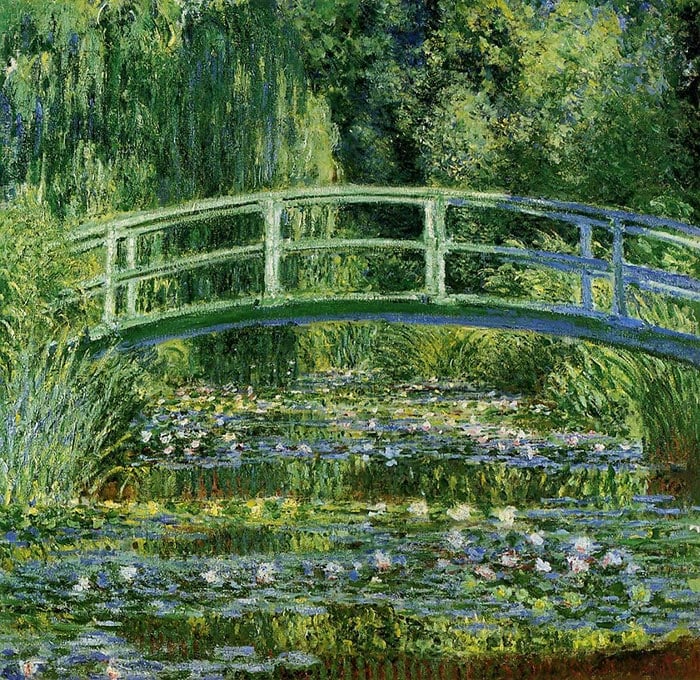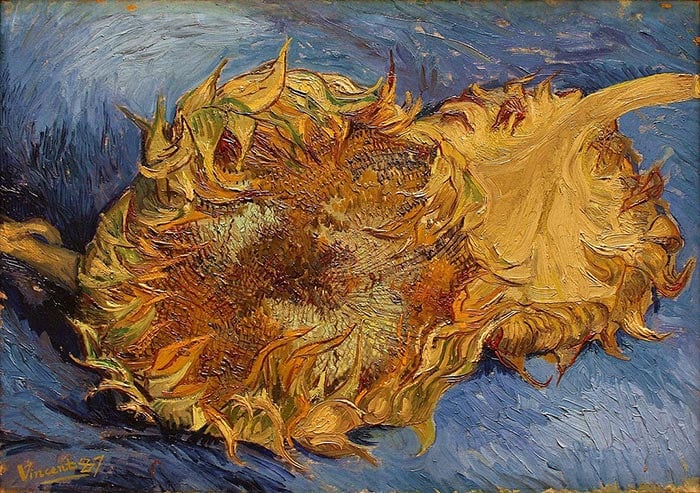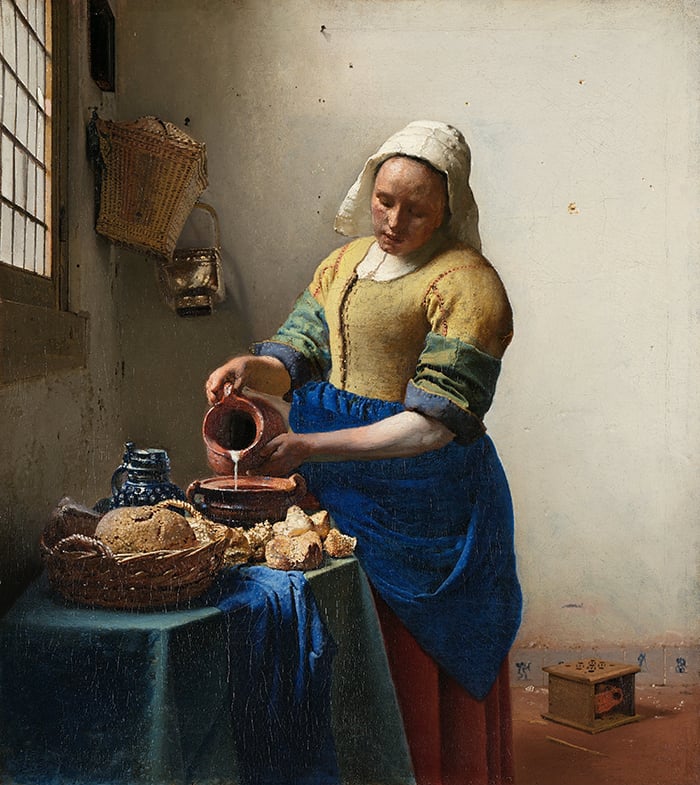

This is a detailed guide on color schemes. I’ll discuss what they are, the different types, and provide master examples.
I’ll walk you through the entire process using one of my recent paintings. You’ll see how I go from idea all the way through to reflecting on the finished painting.
A color scheme is used to describe the overall selection of colors in an artwork. The major color schemes in art are analogous, complementary, split-complementary, triadic, rectangular and monochromatic. These color schemes utilize colors at certain locations on the color wheel.
Before I get into it, I should point out that I don’t really think about color schemes all that much whilst I’m painting. Color is not so simple that you can just apply a color scheme and everything will work out. But it is important that you understand what the popular color schemes mean as they are frequently referenced to describe the use of color in art.
An analogous color scheme uses colors which are next to each other on the color wheel. For example, blues and greens, or oranges and yellows. These colors have a close relationship with each other.
There is not that much hue contrast between analogous colors, so you need to make sure you are creating enough contrast using the other elements like value or saturation.
When I think of analogous colors, Claude Monet’s paintings first come to mind. In this painting, Monet used mostly blues and some greens. There is hardly any hue contrast in this painting. Monet relied more so on value and saturation contrast.

Below is one of Monet’s paintings from his water lilies series. It features all kinds of greens, blues and purples. There are some red accents used for the flowers, but I still consider this to be an analogous painting as red is not a dominant color here.

In Vincent van Gogh’s flower painting below, he used an analogous color scheme of yellows and greens. He also made clever use of line to outline the flowers.

Below is a warm analogous color scheme with mostly reds, oranges and blacks.


Complementary colors are opposite each other on the color wheel. When placed next to each other, there is an extremely strong contrasting and vibrant effect. If overused, your painting may become jarring and uncomfortable to look at.
You should select a dominant color and use the other color as an accent. In van Gogh’s sunflower painting below, he used a dull background of blue to complement the orange for the flowers.

Here is another example of an orange and blue complementary color scheme. In this case, both colors are relatively strong and they fight for your attention.

Below is a more subtle blue and orange complementary color scheme by John Singer Sargent. The blues of the water complement the oranges of the female subject and the shore.

The painting below by Childe Hassam demonstrates just how sophisticated a complementary color scheme can look. Hassam used directional brushwork, broken color and value contrast to create such interest with so few colors.


A split-complementary color scheme utilizes a base color and two secondary colors. It is similar to the complementary color scheme, but one of the complements is split.
Below is an example of a split-complementary color scheme by Claude Monet, with orange contrasting against the greens and blues.


A triadic color scheme utilizes colors which are evenly spaced on the color wheel. For example, yellow, blue and orange, like in the painting below by Johannes Vermeer.
If using a triadic color scheme, I suggest you pick a dominant color and two secondary colors. Otherwise, it would be tricky to balance all three colors without it appearing jarring to look at.


A rectangular color scheme utilizes four colors positioned around the color wheel in the shape of a rectangle. This is a tricky color scheme to manage, as there are four colors involved.
Monet’s painting below of poplars features a rectangular color scheme of orange, yellow, green and purple. However, the purple is fairly weak and used more so as a secondary color to complement the stronger greens, yellows and oranges.

In the painting below by van Gogh, there are four fairly distinct color shapes – yellow for the flowers, green for the vase, blue-green for the wall and a dull orange for the desk.

A monochromatic color scheme utilizes just one color with varying levels of saturation and value. In oil painting, many artists start with a monochromatic layer then build color on top. This way, the value structure can be established without having to worry about multiple colors.
Below are two examples of almost monochrome color schemes for the painting below, with their being mostly varying tones of blue. But there is some hue variance.


I appreciate you taking the time to read this post and I hope you found it helpful. Feel free to share it with friends. If you ever want to learn more, check out my Painting Academy course.

Draw Paint Academy
Dan Scott is the founder of Draw Paint Academy. He's a self-taught artist from Australia with a particular interest in landscape painting. Draw Paint Academy is run by Dan and his wife, Chontele, with the aim of helping you get the most out of the art life. You can read more on the About page.
Enjoyed this post? Join over 123,000 artists who subscribe to the Draw Paint Academy newsletter.
Thankyou. All of this colour wheel information, complete with pictorial references has broken the code for me at last. I think I understand now. Thankyou again Reply